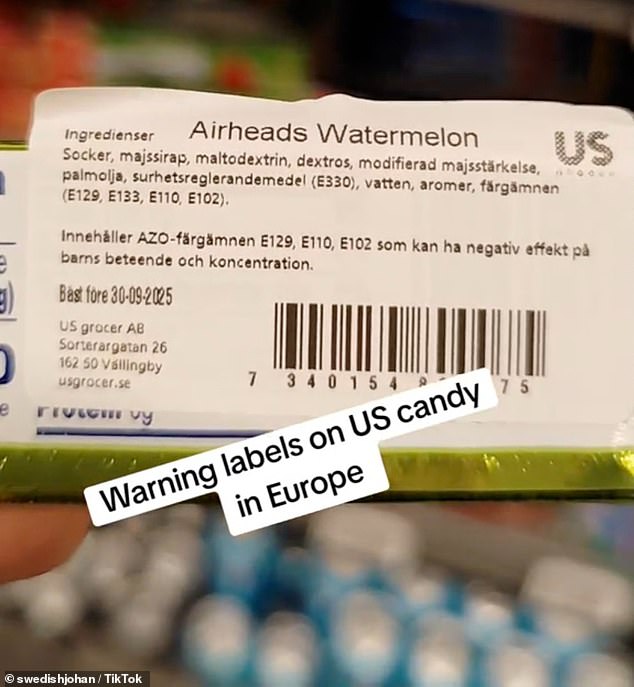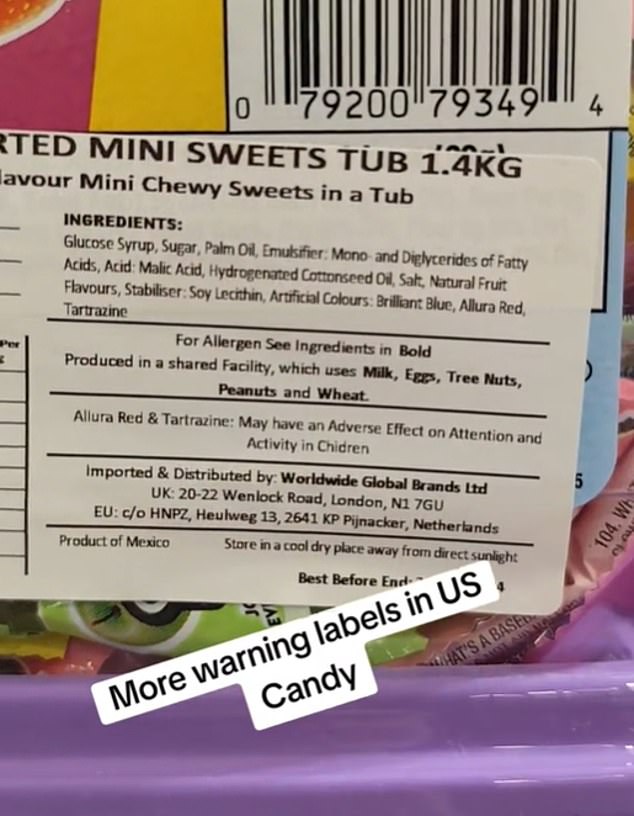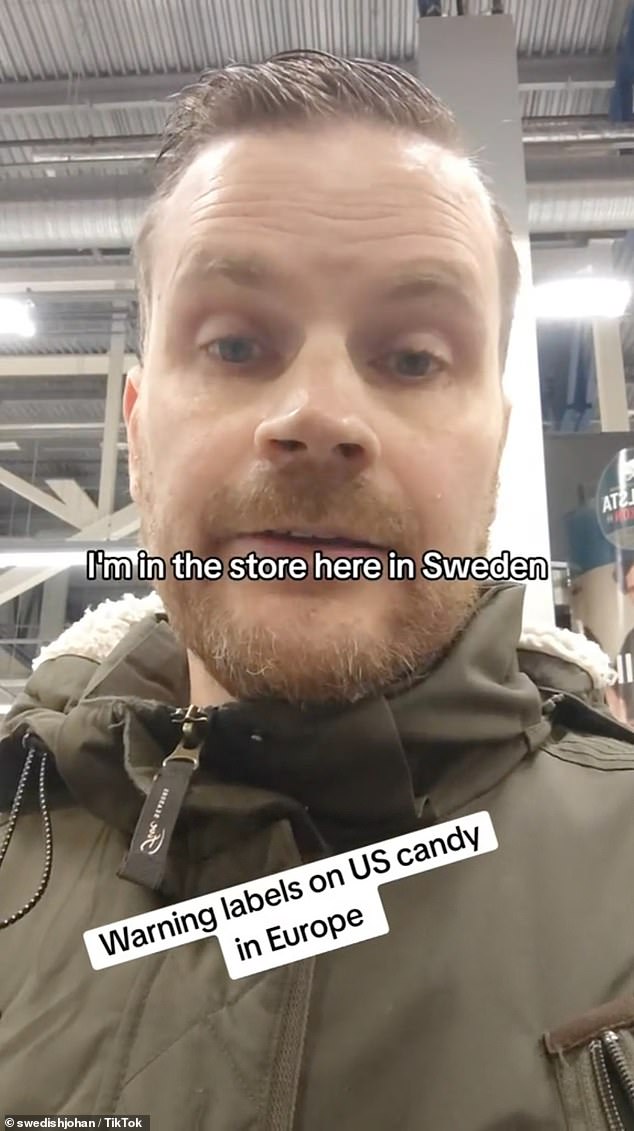Americans on social media were shocked to learn that some of the foods they see every day come with health warning labels in other countries.
In a new video, Swedish TikTok user SwedishJohan shared a video of the American section of his local store selling candy like Airheads, Laffy Taffy, and Sour Patch Kids.
In it, he flipped over a watermelon-flavored Airhead, a fruit-flavored candy bar, showing that above the regular nutrition label, there was a paper label containing a warning.
When translated, the warning reads: “Contains AZO dyes e129, e110, e102 which may have a negative effect on children’s behavior and concentration.”
They are also known as Red40, Yellow 6, and Yellow5 and are perfectly legal in the US, but are heavily regulated in Europe.
In children, research has linked these dyes to behavioral problems such as ADHD, restlessness, inattention, aggression, irritability, and sleep problems.
Johan said: “So American sweets come with warning labels here in Europe‘.
American users reacted immediately, with one user saying, “As an American, as always, I’m embarrassed.”
Johan is a TikToker and father of two living in Sweden. In his initial video, which has more than 88,000 likes and more than 2,800 comments, he said: “we have very strict food regulations on what should and should not be included in food or groceries in Europe.”

The translation of this warning reads: “Contains AZO dyes e129, e110, e102 which may have a negative effect on the behavior and concentration of children.”
Another user said: ‘If someone in Sweden made an app that details all the warning labels on foods in the US, it would be very useful. “We could read them here in the U.S. and it would help us Americans become aware.”
The EU has not banned all three dyes, but a 2008 law says any manufacturer using these products must put a warning label on their product.
This has led many manufacturers to decide to change synthetic dyes for natural options.
All three dyes are made from petroleum oil and are found in more than 36,000 food products sold in the United States, according to a 2024 report of the Environmental Working Group.
They are also found in cosmetics, medications, and personal care products such as soap.
Although these dyes are used nationally and are considered safe by the FDA, there have been moves in some states to ban food dyes.
The California Office of Environmental Health Hazard Assessment reviewed 27 older clinical trials in animals and children and published a report in 2021 confirming that there was a link between these dyes and behavioral problems in children.
Specifically, these dyes could trigger ADHA symptoms and irritability in some children, or cause children who already have these problems to have worse symptoms.
OEHHA Director Dr. Lauren Zeise linked these dyes to the increase in ADHD diagnoses in children.
Dr. Zeise said, “With an increasing number of American children diagnosed with conduct disorders, this screening can contribute to efforts to protect children from exposures that can exacerbate behavioral problems.”
This led Governor Gavin Newsom to sign a new law banning Red 40, Yellow 5, Yellow 6, Blue 1, Blue 2 and Green 3 in foods served in the state’s public schools.
Companies have until December 2027 to get rid of these dyes and replace them with natural colorants like beet juice, or they will be under threat of fines.
Starting in October 2024, New York, Illinois, Pennsylvania and South Dakota are also considering limitations on some food dyes.

In a follow-up video, Johan went to Costco to see the additives in the candy there. Most of the candies he found were made in the EU and did not contain synthetic colourings. The one he found with dye was American-made Laffy Taffy, which contained Red 40 (Allura Red) and Yellow 5 (Tartrazine).
It is not clear how these chemicals can cause behavioral changes.
According University of California MercedHowever, older research in animals has shown that these chemicals can alter the type and amount of neurotransmitters released by the brain.
Neurotransmitters are the signals that control brain function and play an important role in mood, decision making, and sleep.
In the past, dyes have also been linked to cancer. In 1990, the FDA banned Red 3 in cosmetics after reports linked it to thyroid cancer.
Studies conducted in the 1980s on laboratory animals found that those given high doses of the dye were more likely to develop thyroid cancer than other animals.
Still, the researchers estimated that humans were unlikely to develop thyroid tumors from red dye, since they do not consume anywhere near the amount that laboratory animals did. An estimate found that Red 3 probably causes one in 100,000 thyroid tumors.
With this evidence, FDA officials said they planned to phase out the chemical from food products.
Despite promises to the contrary, EWG said the FDA has not yet followed through on a ban on Red 3 in food products, and it can be detected in 3,300 sold in the US.
The EU banned this in most food products in 1994. This particular dye was not found in any of the products Johan highlighted.

